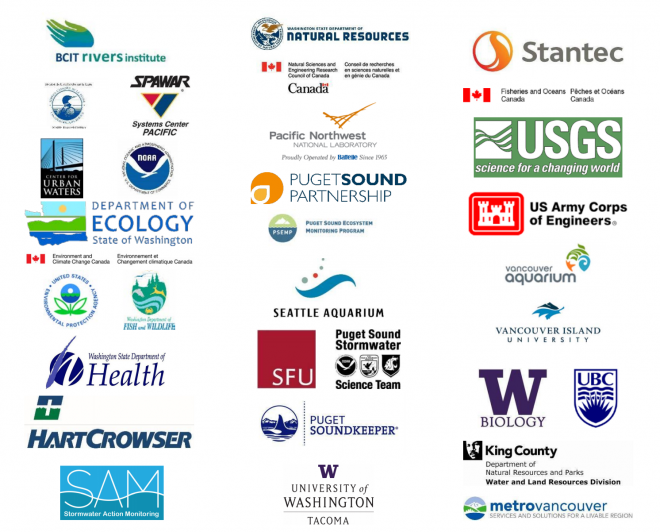2016 Salish Sea toxics monitoring review: A selection of research
A 2017 report from the Puget Sound Ecosystem Monitoring Program presents an overview of selected recent monitoring and research activities focused on toxic contaminants in the Salish Sea.

Report summary
Over the past 150 years of industrialization, human activities have introduced a variety of chemicals into the Salish Sea, at levels that can be harmful to people and aquatic biota. A number of these chemicals are toxic and have the potential to harm or threaten the Salish Sea ecosystem, including industrial chemicals (e.g., polychlorinated biphenyls [PCBs]), flame retardants (e.g., polybrominated diphenyl ethers [PBDEs]), plasticizers, and dioxins. Additional chemicals that may pose a threat to the Salish Sea ecosystem include pharmaceutical and personal care products (PPCPs; e.g., medications, household chemicals, beauty products, etc.) and chemicals used in agriculture, landscaping and yard care (e.g., current use and legacy pesticides, livestock pharmaceuticals, etc.). Collectively, these toxic chemicals reach the Salish Sea through a variety of pathways, including stormwater runoff, atmospheric deposition, industrial and municipal discharges, and agricultural runoff.
Significant effort has gone into understanding the level of risk posed by the presence of toxic contaminants in the Salish Sea and how best to address unacceptable risk. The purpose of this document is to provide a snapshot of regional efforts through a series of one-page program contributions. These contributions provide an overview of the status and trends for some toxics, and highlight current efforts to identify and mitigate sources, clean up contaminated systems, and restore ecosystem function.
Key Points
While the contributions in this document are not intended to be comprehensive or inclusive of all of the work going on in the Salish Sea, they have allowed us to identify a few key points:
- Aquatic biota are exposed to contaminants at levels that can adversely affect their health and the health of people that consume them.
- The levels of some contaminants have declined in sediments and aquatic biota as a result of successful management actions.
- Contaminants of emerging concern such as estrogenic chemicals and microplastics are widespread and frequently detected.
- Better analytical and measurement methods, improved models, and ongoing monitoring continue to improve the ways we characterize fate, transport, and biological impacts of toxic contaminants.
- Contaminant source control and cleanup have been an effective approach to reduce sediment contaminant loads in many areas.
- Stormwater impacts and responses are being addressed through coordinated regional efforts.
- On-the-ground remediation of contaminated sites is ongoing throughout the region.
Contributors
Over 40 research programs contributed information to this document. Each contributor was challenged to distill complex information into a short synopsis to provide key highlights of their work. We extend our thanks to the contributors and applaud their dedication to understanding toxic contaminant stressors in the Salish Sea ecosystem, in addition to working towards solutions.
Citation
PSEMP Toxics Work Group. 2017. 2016 Salish Sea Toxics Monitoring Review: A Selection of Research. C.A. James, J. Lanksbury, D. Lester, S. O’Neill, T. Roberts, C. Sullivan, J. West, eds. Puget Sound Ecosystem Monitoring Program. Tacoma, WA.



